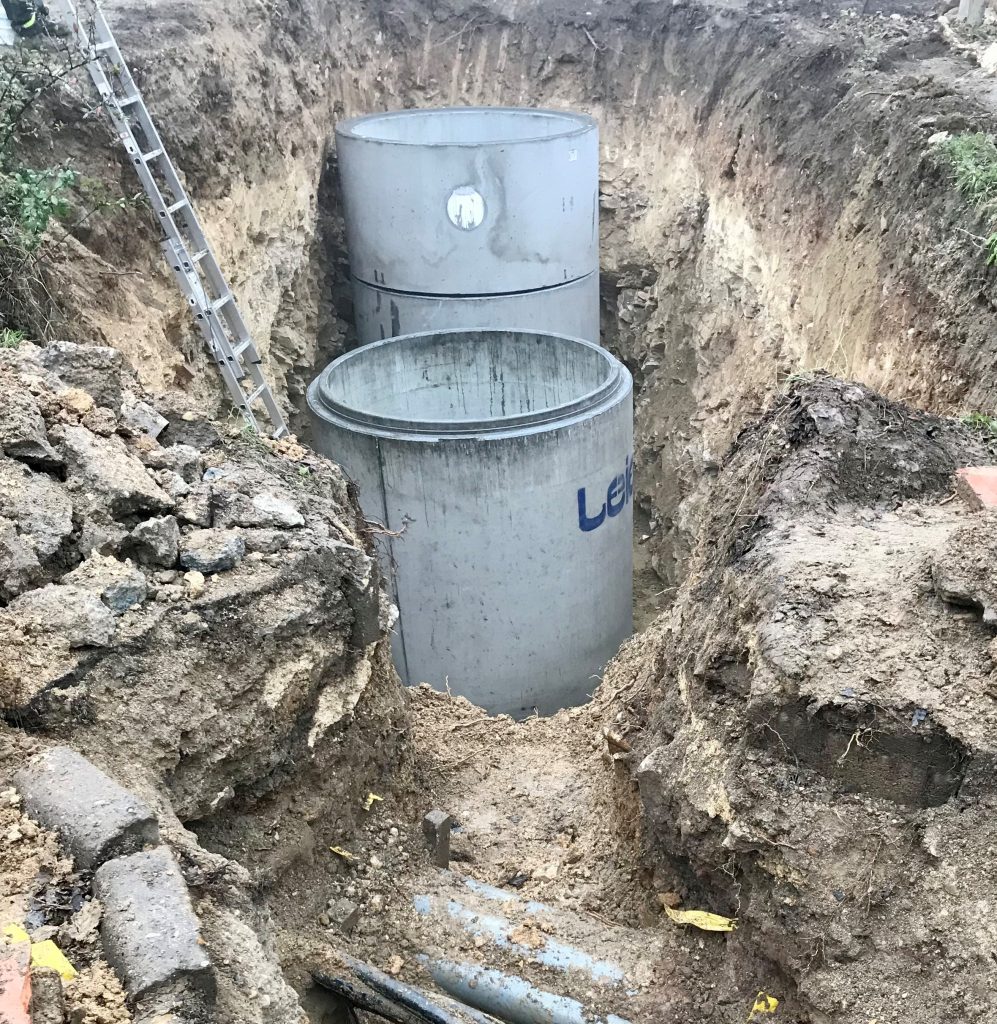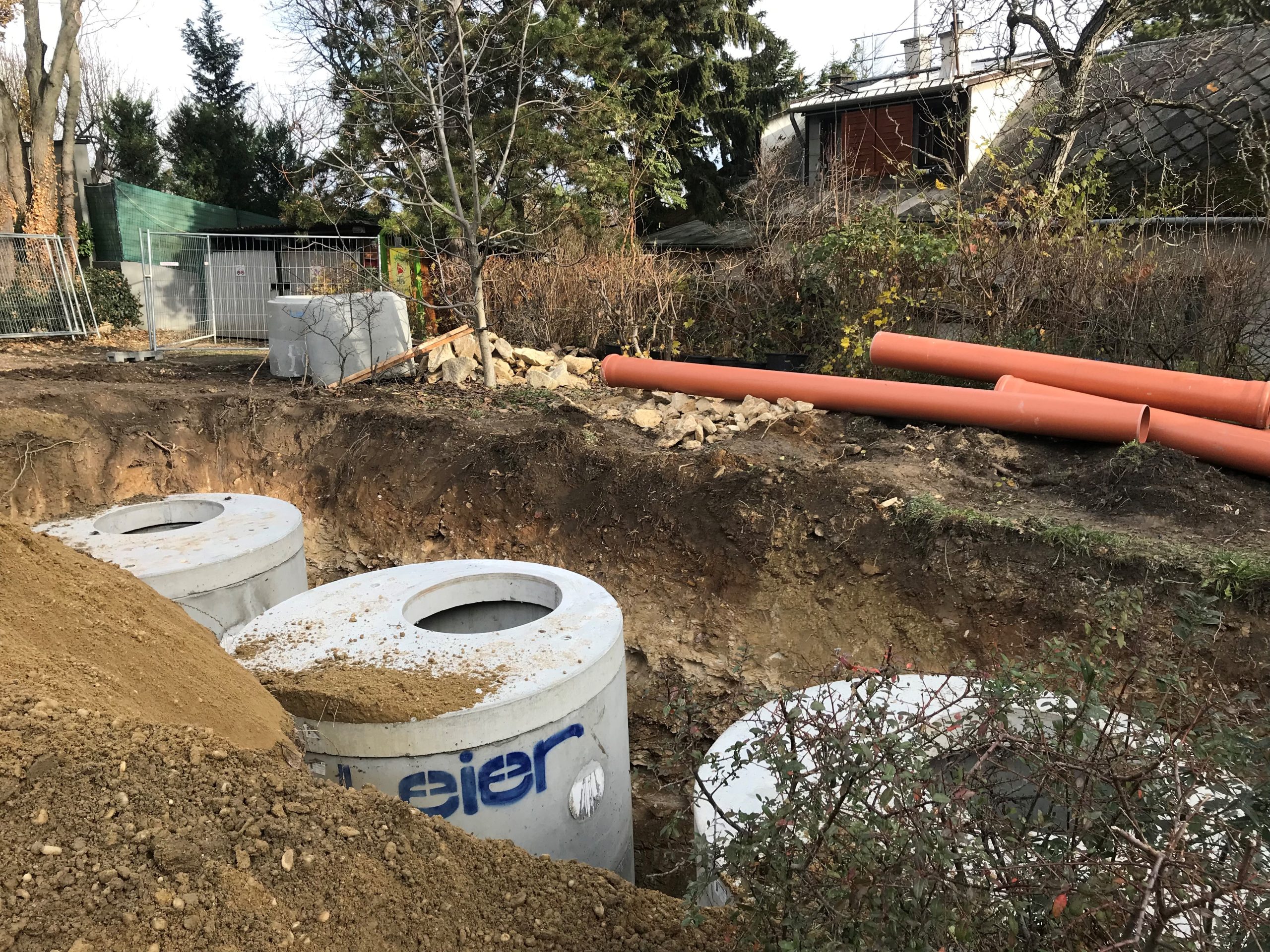Budapest Főváros XII. kerület Hegyvidéki Önkormányzat
Diana utcai felszín alatti esővíztározó

A Hegyvidéki Önkormányzat projektgazdaként vesz részt a LIFE VárosiEső elnevezésű projektben. A pilot projekt célja, hogy a főváros különböző földrajzi adottságú és beépítettségű kerületeiben megvizsgálja a klímaváltozás következtében megváltozott csapadékesemények, vagy azok hiánya miatt kialakuló problémákat, és ennek tükrében megoldási javaslatot, cselekvési tervet hozzon létre kerületi majd fővárosi szintű, fenntartható csapadékvíz-gazdálkodásra.
A LIFE Városi Eső projekt fő hosszú távú célja, hogy a klímaváltozás következtében – a rendelkezésre álló összes elemzés szerint – egyre intenzívebbé váló csapadékmennyiség a jövőben minél kisebb kárt okozzon Budapesten, illetve hogy a projekt tapasztalatait felhasználva más hazai és külföldi városok is hatékonyabban tudjanak védekezni az intenzív csapadék okozta károk ellen.
Hegyvidék önkormányzata élen jár abban, hogy időben dolgozzon ki stratégiát a klímaváltozás hatásainak mérséklésére.
Ezek közül az egyik legfontosabb a hegyről lezúduló csapadék pusztító hatásának mérséklése, illetve a felfogott csapadékvíz hatékony felhasználása az aszályos időszakban.
A lakosság részére évek óta biztosítanak esővízgyűjtő hordókat. A most elindult kivitelezés során új esővízgyűjtő ciszternákat telepítettek a Diana utca – Gyöngyvirág utca kereszteződése mellett, ahol a dombról lefolyó esővíz jelentett veszélyt a mélyebben fekvő utcákra. A kivitelezést hosszas tervezés, helyszínválasztás előzte meg, de a most telepített összesen 30 m3-es vízgyűjtők csak a kezdetet jelentik.
A következő ütemben az Üröm utcába kerül majd kettő 10 m3-es ciszterna telepítésre, melyek közül egyik a tárolást, a másik a szikkasztást szolgálja – alkalmazkodva a helyi viszonyokhoz.
A Városi Eső projekt keretében megvalósuló beruházásnak lesz folytatás a kerület más részein is, hiszen ezek a fejlesztések egy nagyobb rendszer első minta beruházásai. A Pagony utcában például esőkertek, övárkok kialakítására kerül majd sor, de tervben van olyan monitoring állomások, mérőműszerek telepítése is, melyek a valós adatok megismerésével azonnali beavatkozást is lehetővé tesznek majd.
A Hegyvidék TV interjúja:
Mi a célja a beruházásnak?
Mi a célja a beruházásnak?
A Diana utcai felszín alatti esővíztározó a LIFE Városi Eső projekt keretében jött létre, és a csapadékvíz megtartását és száraz időszakban történő újrafelhasználását célozza. A Hegyvidéki Önkormányzat projektben vállalt hosszú távú célja, hogy a klímaváltozás következtében – a rendelkezésre álló összes elemzés szerint – egyre intenzívebbé váló csapadékmennyiség a jövőben minél kisebb kárt okozzon köz-és magánterületek egyaránt.
Miért a Diana utca és a Gyöngyvirág út kereszteződése?
Miért a Diana utca és a Gyöngyvirág út kereszteződése?
A Gyöngyvirág út és a Diana utca kereszteződésénél tervezett felszín alatti víztározó a Győri út – Svábhegy részvízgyűjtő területének tetején helyezkedik el. Heves esőzések esetén a részvízgyűjtő alsó területei súlyos árvízkárokat szenvednek, beleértve a köz- és magáningatlanokat is. Lefolyásmodellezés eredményei szerint jelentős mennyiségű csapadék fogható meg már a Gyöngyvirág út és a Diana utca kereszteződésénél is, így ez tökéletes helyszín lehet a hirtelen lezúduló eső visszatartására.
A Hegyvidéki Önkormányzat ezzel a kísérleti projekttel azt kívánja demonstrálni, hogy a vízgyűjtő terület alsó részeinek árvízvédelme érdekében a csapadékvizet már a magasabb területeken vissza kell tartani. A kerületben hasonló víztározó az Öröm utcában valósul meg. Amennyiben ezek a kísérleti beavatkozások sikeresnek bizonyulnak, további hasonló fejlesztés valósulhat meg a kerületben a jövőben.
Hogyan működik az esővíztározó?
Hogyan működik az esővíztározó?
A felszín alatti víztartály teljes kapacitása 30 m3, amely 3 darab 10 m3-es, egymással összekapcsolt elemből áll. A felszínen elfolyó csapadékvizet a Diana utcán át keresztben elhelyezett rácsos folyóka fogja fel, majd a föld alatt lévő, összekapcsolt tározókba vezeti. A csapadékvíz tisztítása homokfogóval és olajfogóval történik. Ha az összes tartály megtelt, a felesleges esővíz egy túlfolyón keresztül visszaáramlik az úttestre.
Mi történik a felfogott csapadékvízzel?
Mi történik a felfogott csapadékvízzel?
Minden tározó elemben egy automatikus jeladóval ellátott kerül elhelyezésre, amely a tartályok telítettségét mérik. Az adatok a Hegyvidéki Önkormányzat szerverén gyűlnek, s így az Önkormányzat munkatársai folyamatosan követhetik az összegyűjtött csapadékvíz mennyiségét. Az összegyűjtött esővizet a zöldfelület fenntartók kiszivattyúzzák, és száraz időszakokban a közterületeken található kisebb zöldfelületek (pl. virágágyások, fasorok, méhlegelők stb.) öntözésére használják, kiváltva ezzel a tűzi víz használatát.



